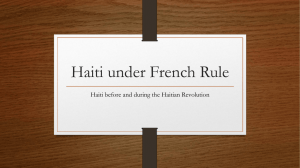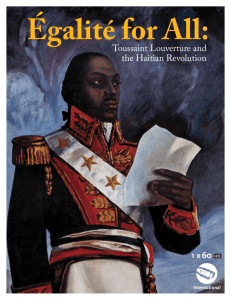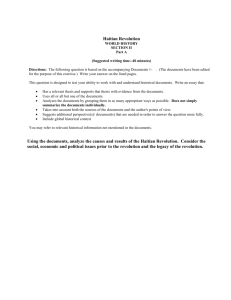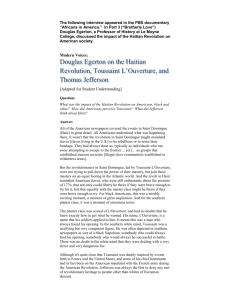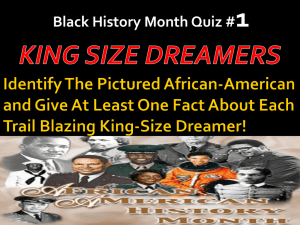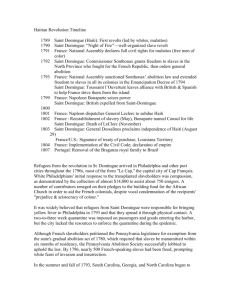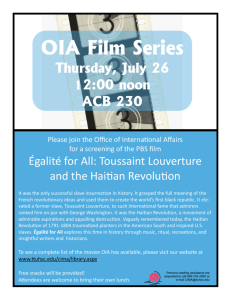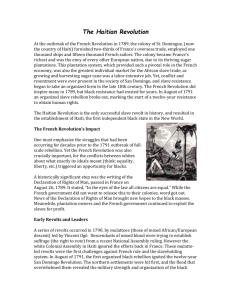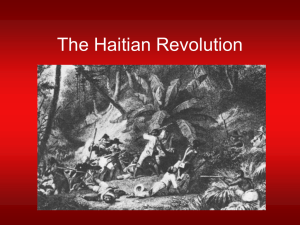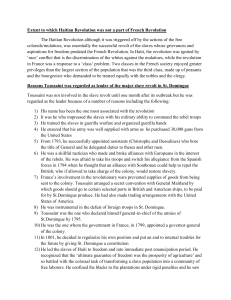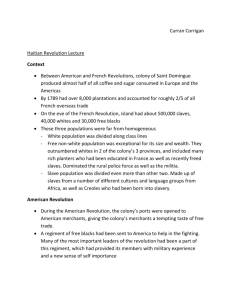Haiti work sheet - Humanities9CCB201415
advertisement
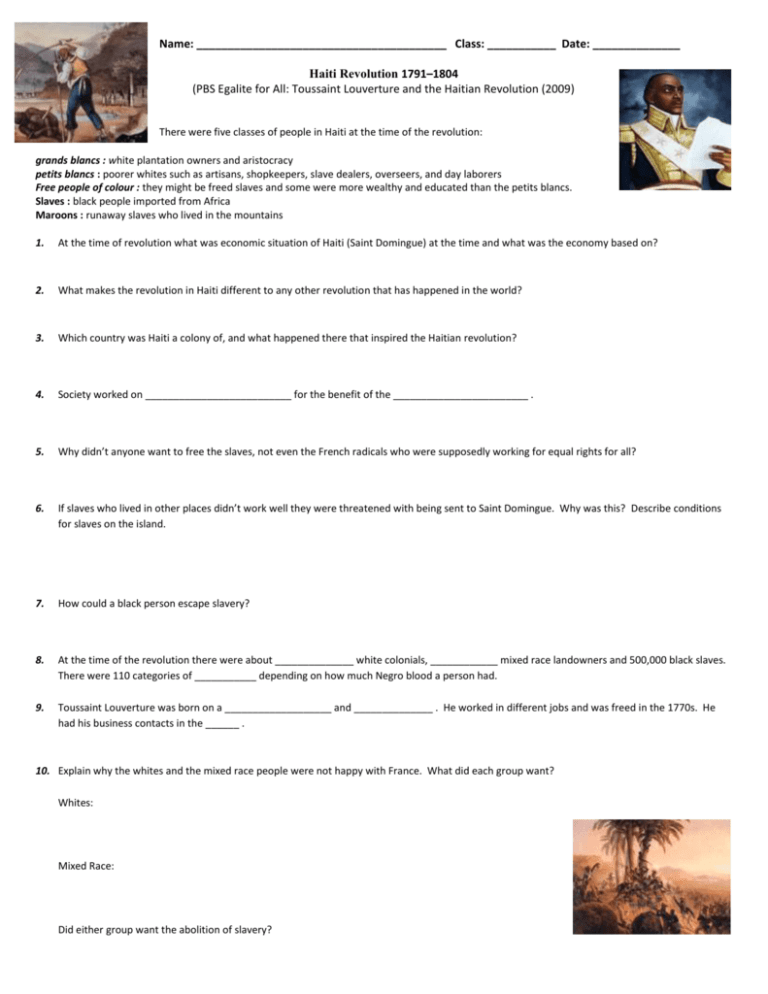
Name: ________________________________________ Class: ___________ Date: ______________ Haiti Revolution 1791–1804 (PBS Egalite for All: Toussaint Louverture and the Haitian Revolution (2009) There were five classes of people in Haiti at the time of the revolution: grands blancs : white plantation owners and aristocracy petits blancs : poorer whites such as artisans, shopkeepers, slave dealers, overseers, and day laborers Free people of colour : they might be freed slaves and some were more wealthy and educated than the petits blancs. Slaves : black people imported from Africa Maroons : runaway slaves who lived in the mountains 1. At the time of revolution what was economic situation of Haiti (Saint Domingue) at the time and what was the economy based on? 2. What makes the revolution in Haiti different to any other revolution that has happened in the world? 3. Which country was Haiti a colony of, and what happened there that inspired the Haitian revolution? 4. Society worked on __________________________ for the benefit of the ________________________ . 5. Why didn’t anyone want to free the slaves, not even the French radicals who were supposedly working for equal rights for all? 6. If slaves who lived in other places didn’t work well they were threatened with being sent to Saint Domingue. Why was this? Describe conditions for slaves on the island. 7. How could a black person escape slavery? 8. At the time of the revolution there were about ______________ white colonials, ____________ mixed race landowners and 500,000 black slaves. There were 110 categories of ___________ depending on how much Negro blood a person had. 9. Toussaint Louverture was born on a ___________________ and ______________ . He worked in different jobs and was freed in the 1770s. He had his business contacts in the ______ . 10. Explain why the whites and the mixed race people were not happy with France. What did each group want? Whites: Mixed Race: Did either group want the abolition of slavery? 11. What were the consequences of the petition that the mixed race people sent to France? 12. Dutty Boukman was an escaped slave and a high priest of the ________________ religion. He told the slaves turn against their masters. What happened on the night of August 22nd 1791? 13. Toussaint saved the plantation owner who had given him his freedom, and after months of fighting in which many people died, he decided to go to the mountains to help the _________. He had read the ideas of the _____________________ thinkers and he wanted to make life fairer for the coloured people on the island. The slaves started to give up the fight due to _______________ in the mountains and France sent reinforcements to the colonists. 14. What did Toussaint write in the settlement with the colonists, and what was their reaction? 15. Why was the French revolutionary, Sonthonax, popular with the mixed race people and slaves? 16. When the Terror was occurring in France, Toussaint got support from ___________________ to fight the French, whilst the white colonists asked for help from __________________ so that they could keep hold of their power. Finally the new government in France declared ________________ for all slaves in the Empire. Toussaint changed sides and fought for _________________, pushing out all the Spanish and British troops. He made himself __________________ of the colony. Many people in Europe and the USA did not like the idea that black people had beaten white _____________. 17. Napoleon took over France through a military coup saying, “The Revolution is _________________ .________________________________ _____________________.” What did he then say and do about slavery in the Empire? 18. When Napoleon wrote a new constitution, which included the use of slaves, what did Toussaint write? Why is it so important? 19. Why did Napoleon think that the USA would support him in the fight for Saint Domingue? 20. Finally after fighting against Napoleon’s troops for 3 months, Toussaint surrendered because the blacks didn’t support him as they didn’t understand that they needed to work in the sugar cane fields to make the colony prosper. What happened to him after that? 21. When slavery was reintroduced in Guadeloupe, what was the reaction to this in Saint Domingue? What does “scorched earth policy” mean? 22. Complete this famous statement of Toussaint L’Ouverture: “You have only cut down the ______________ of the liberty _____________ of the blacks in Saint Domingue. It will spring back from the _____________ for they are numerous and _____________.” 23. Give 3 reasons why Haiti has not managed even to this day to develop into a successful country.
